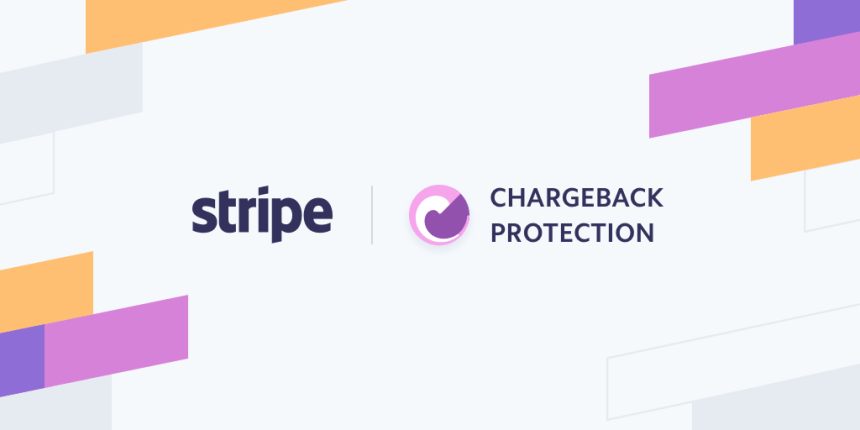As of this month, July 2021, there are over 700 unicorns in the world. And Stripe is second on the list, with a market valuation of $95 billion, according to CBInsights.
There are many reasons why merchants love Stripe. For one, their basic payment processing pricing is transparent, and you can pay as you go. Plus, Stripe integrates nicely with several business software applications, including e-commerce platforms, making it easy to use.
That said, Stripe, like any other payment processor, isn’t exempt from the growing threat of payment disputes and chargebacks. In fact, Stripe noted that chargebacks have elevated since the pandemic. And in their bid to ensure transparency and trust across the board, Stripe established stringent rules regarding dispute mitigation.
Here’s one: Stripe can terminate a merchant’s account they deem to be at the risk of excessive chargebacks without any prior warning. And when they do, regaining access to your account is an uphill battle.
The good news, though, is that Stripe has mechanisms for helping merchants cope with disputes, including a low chargeback fee of $15. And Stripe is one of the few payment processors that will refund the chargeback fee if the dispute is resolved in favor of the merchant.
However, few merchants come out on top at the end of the chargeback battle in these days of complex chargeback rules and ever-changing industry processes.
In light of that fact, I want to share with you proven hacks and tricks that’ll make your Stripe chargeback mediation less of a nightmare. To get the best from this copy, you’ll have to read it like you’re looking for hidden truths, not like one of those listicles with many promises and zero insight.
Let’s get started, shall we?
The Lifecycle of Stripe disputes
Card networks have different dispute patterns, but they usually follow a similar set of rules.
If you are a new e-commerce merchant, the first thing you should keep in mind is that resolving a Stripe dispute involves several parties. The second thing is that Stripe does not make the final decision in a dispute. They act as the carrier to transfer your evidence to their partners, who in turn send your documentation to the card issuer if they think it’s compelling enough to overturn the chargeback.
Here’s how the process works:
- The customer files a chargeback with their bank and reserves the transaction chargeback by debiting Stripe for the disputed amount and a dispute processing fee.
- Stripe receives a notification of the disputed payment, deducts the funds from the merchant’s Stripe account balance, and sends the merchant an automated email. That process creates a Dispute with the status needs_response.
- The merchant has 7-21 days (chargeback response time-limit) to submit evidence to prove the chargeback is meritless, potentially overturn it and reclaim their money.
- If the merchant decides to fight back by submitting the said evidence, Stripe reviews the evidence and determines whether it meets the card brand’s demands for resolving the dispute. If it doesn’t, they close the case. If it presents a potential resolution, Stripe transfers the evidence to the card issuer.
- If the card issuer rules in your favor, the disputed amount is returned to your account. But if they ruled against you, the customer will retain the money.
Crucial Stripe Dispute Terminologies To Keep in mind
When a customer files a Stripe dispute, you have two options: fight it (respond) and submit the appropriate evidence or accept it. Below are crucial terms to note.
- Inquiries and retrievals
When a customer files a Stripe dispute, some card brands start by investigating the transaction before proceeding with a chargeback if need be.
American Express refers to that process as “inquiries,” but most card brands refer to them as “retrievals.” MasterCard and Visa rarely make inquiries. They create a chargeback immediately after a customer files a transaction dispute.
Inquiries give you a window to mitigate the dispute before it becomes a full-blown chargeback. And to achieve that, you should submit every relevant documentation on the transaction or refund the payment in full. Refunding the customer means you addressed the inquiry or retrieval. And Stripe will not charge you any dispute fee.
But you fail to address the inquiry or retrieval with compelling evidence. You will most certainly lose the case.
The rule of thumb is to ALWAYS respond to inquiries and retrievals as if they were chargebacks. Sometimes, customers file Stripe disputes when they don’t recognize a charge on their card. So, contact the customer first and figure out the issue to help you provide commensurate documentation that addresses the card issuer’s inquiry. And put in the work to make the dispute go away at that stage.
- Chargebacks
Suppose the card brand decides that your evidence does not meet their requirement for overturning the Stripe dispute, or they chose not to make an inquiry or retrieval. In that case, they’ll go straight to creating a chargeback.
They will forcefully deduct and hold the transaction amount throughout the Stripe dispute timeline. As stated earlier, the card network will give you 7-21 days from when they created the chargeback to respond with sufficient evidence.
Chargeback response time-limit can vary depending on the card network, and if you don’t present compelling evidence within that time, you will lose the case by default.
But if you send your documentation as required, Stripe will convey the same to the customer’s bank, and the bank has 60-75 days to reach a decision. If you choose not to appeal it, their decision is the final step in the dispute process.
- Disputed amount
By and large, the disputed amount represents the transaction amount. That is the dollar value of the disputed transaction. However, Stripe notes that the amount of a dispute often exceeds the original charge amount. This discrepancy, they said, is usually due to currency conversion. And it can also occur when the card’s issuer bundles multiple charges into a single chargeback, which is more common for regular, recurring charges or various charges of small amounts—usually less than 50 USD.
But generally, they convert the disputed amount back to the payment’s original currency if the system converted the actual payment into your account’s default currency.
Stripe advised that if you receive a Stripe dispute for more than the original charge amount, you should review all payments made to your business by the same customer or card. And determine whether more than one charge might be included in the disputed amount. If you cannot determine why a dispute is for more than the original charge, you can contact their customer care.
How To Ace Your Stripe Dispute And Chargeback Response
Take a look at these numbers:
- 81% of customers freely admit to filing a chargeback out of convenience.
- A customer who successfully files a chargeback is 9x more likely to file another one, and 40% of customers who file a chargeback will file another one within 60 days.
- Merchants only hear from 4% of dissatisfied customers, and only 1 out of 20 customers will contact and complain if they have an issue with their order. The remaining 19 are more likely to file a chargeback.
- Chargebacks increase 41% every two years, and estimates show that merchants could lose up to $30 billion to chargebacks by 2030.
If you didn’t automate your chargeback with tools such as Chargeflow.io, you will have to manually gather evidence and respond to each case. For that, Stripe recommends that users respond to disputes within the Stripe Dashboard. It guides you through the submission process, step-by-step—automatically formatting the information you provide. To complete that process, they will ask for any necessary files on the purchase.
Below are some vital guidelines that can help you win stripe chargebacks with ease.
Provide compelling evidence and keep it to the point
Customers lodge thousands of disputes daily, and that keeps card issuers busy.
So, avoid unnecessary details, lengthy introductions about your product or company, a complaint about the customer, or the dispute’s unfairness. Instead, hammer down to the issue at hand. Provide facts about the original purchase using a neutral and professional tone.
Do your due diligence; take some time to investigate the dispute while collecting evidence to submit. For example, review Google Maps and Street View to understand your delivery location better or check social media like Facebook or LinkedIn to help establish the customer as a legitimate cardholder.
Exchanges such as email correspondence or texts with the customer do not verify identity. If you must include them, make sure that you submit only the relevant information.
Make your evidence factual, professional, and concise. While providing little evidence is a problem, overwhelming the card issuer with unnecessary information can have the same effect. Remember, card issuers do not follow any links you provide in response. Include a clear screenshot of your terms or policies as they appear during checkout or on your site if they are an essential part of your defense.
Include compelling proof of customer authorization
Fraudulent Stripe disputes make up the majority of all cases. Showing that the actual cardholder knew of and authorized the transaction under dispute is crucial to winning Stripe chargebacks. Any data that shows proof of this is a standard part of an effective response, such as:
- AVS (Address Verification System) matches
- CVC (Card Verification Code) confirmations
- Signed receipts or contracts
- The IP address that matches the cardholder’s verified billing address
Stripe always includes any AVS/CVC results and the purchase IP (if available from your Stripe integration), but if you have any other evidence of authorization, be sure to include it.
Include evidence that you delivered the service or product
Aside from fraudulent disputes, cardholders’ claims that products or services never arrived or happened were defective or unsatisfactory or not as described are potential dispute reason codes. Let’s assume that the product or service was in good standing and shipped and delivered before the dispute date; then, you should provide proof of use or delivery.
If you sold a physical good to the customer, then provide proof of shipment and delivery that includes the full delivery address, not just the city and ZIP code.
And if your client provided a “Ship To” name that differs from their own (e.g., gift purchase), make sure that you have documentation explaining why they differ. While it’s common practice to purchase and ship to an address that doesn’t match the card’s verified billing address, this is an additional dispute risk.
On the other hand, if you sold digital merchandise, provide evidence such as an IP address or system log, proving the customer downloaded the content or used your software or service.
Include a copy of your terms of service and refund policy
When it comes to disputes, fine prints matter. Providing proof that your customer agreed to and understood your terms of service at checkout or did not follow your policies regarding returns or refunds is critical. A clean screenshot of how your terms of service or other policies are presented during checkout is an essential addition to your evidence—it is not enough to include a text copy of these.
When submitting documents or images as evidence, use the following recommendations to make sure they can remain readable:
- Use a 12 point font or larger.
- Use bold text, callouts, or arrows to draw attention to pertinent information.
- Avoid using color highlighting.
When uploading screenshots:
- Crop the screenshot to the area of interest and circle any key components (e.g., delivery confirmation or signature)
- Use the text fields in the dispute evidence form to describe what the image contains and how it supports your response.
Be aware. Card network will consider any illegible text or data you submit with your response as incomplete and not reviewed.










